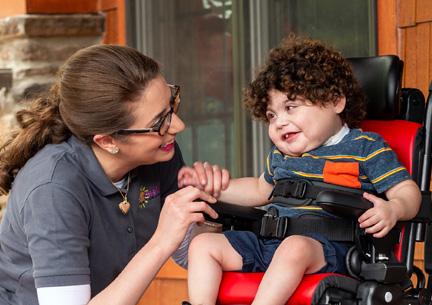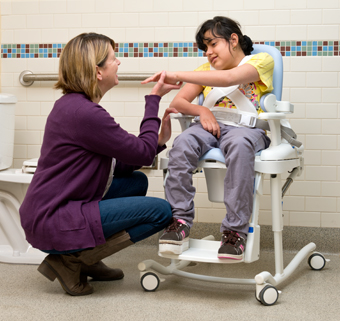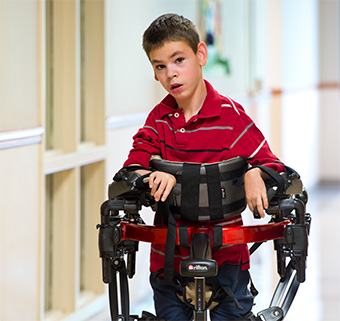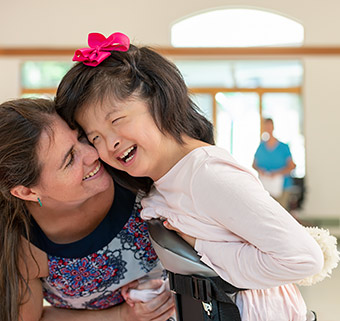Activity-Based Curriculum in Action
An Entirely Different Way of Looking at Therapy
| April 2016 Students at Woodland Developmental Center are on the move all day. The hallways are busy, the classrooms noisy and full of activity as the children practice important life skills that have been incorporated into their curriculum. And that’s what’s different about Woodland. Where students with disabilities in other schools may be seen two or three times a week in the therapy department, Woodland is set up to do “therapy” all day. That is because it uses the MOVE Curriculum, an activity-based program that encourages students to practice their transfers, sitting and walking skills within the context of their daily activities.
Students at Woodland Developmental Center are on the move all day. The hallways are busy, the classrooms noisy and full of activity as the children practice important life skills that have been incorporated into their curriculum. And that’s what’s different about Woodland. Where students with disabilities in other schools may be seen two or three times a week in the therapy department, Woodland is set up to do “therapy” all day. That is because it uses the MOVE Curriculum, an activity-based program that encourages students to practice their transfers, sitting and walking skills within the context of their daily activities.
Take a minute to browse the cover story of the St Clair County RESA (Regional Education Service Agency) publication that provides a glimpse into the success of the MOVE™ program at Woodland. As they say, “it’s an entirely different way of looking at things,” and it’s made all the difference for the kids and staff at Woodland. You’ll also find there a link to the video they produced four years ago, also describing the success of the MOVE Program at Woodland.




